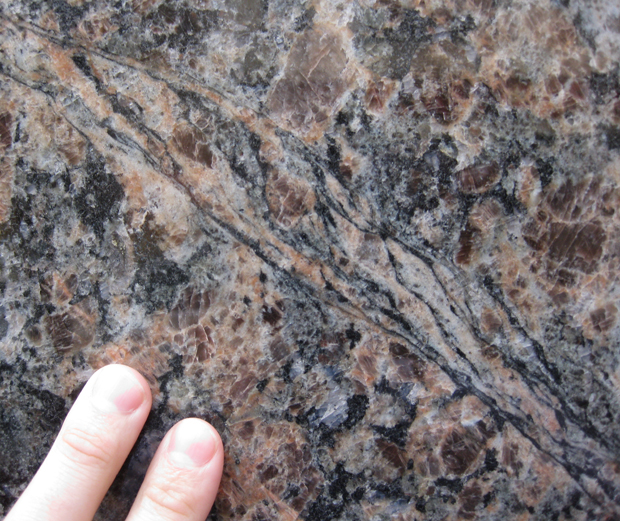One from the UTEP Reading Room
Incipient mylonitization of a granite/granitoid, as displayed in a sample on a shelf of one of the meeting rooms adjacent to the Reading Room of the Geological Sciences building at the University of Texas at El Paso. Same side, slightly different lighting conditions: I’d call this a protomylonite. Some of you might prefer the term … Read more

